
Montmartre: The Artistic Heart of Paris
Discover Montmartre: Paris' charming hilltop neighbourhood, a blend of artistic heritage, culinary delights, and picturesque streets offering stunning views and a vibrant culture.
Montmartre, perched atop a hill in the north of Paris, is a neighbourhood that radiates charm and artistic heritage. Once the home of famous artists like Picasso, Van Gogh, and Toulouse-Lautrec, Montmartre continues to be a hub for creativity and inspiration. As you stroll through its narrow, winding streets, you'll feel as though you've stepped back in time. The area's distinctive bohemian atmosphere is enhanced by lively street performers, quaint cafes, and the iconic Sacré-Cœur Basilica, which offers breathtaking views of the city below. Montmartre is not just about art; it is also a culinary paradise. The Place du Tertre, a bustling square, is famous for its outdoor artists and terraces where you can enjoy traditional French cuisine. Don't miss the chance to visit the local boulangeries and patisseries, offering freshly baked bread and pastries that are simply irresistible. Exploring the neighbourhood's hidden corners, you'll find charming boutiques, antique shops, and local markets that capture the essence of Parisian life. One of the most enchanting aspects of Montmartre is its sense of community. The neighbourhood has managed to preserve its village-like feel despite being part of a bustling metropolis. Whether you're visiting the Musée de Montmartre to learn about its rich history or simply wandering through the cobblestone streets, Montmartre invites you to slow down and soak in its unique atmosphere.
Local tips in Montmartre
- Wear comfortable shoes; the streets are steep and often cobblestoned.
- Visit early in the morning or late in the afternoon to avoid crowds at Sacré-Cœur.
- Consider taking a guided walking tour to learn about Montmartre's rich history and hidden gems.
- Try the local specialties like escargots and French onion soup at a traditional bistro.
- Always keep an eye on your belongings, as tourist areas can attract pickpockets.
Montmartre: The Artistic Heart of Paris
Montmartre, perched atop a hill in the north of Paris, is a neighbourhood that radiates charm and artistic heritage. Once the home of famous artists like Picasso, Van Gogh, and Toulouse-Lautrec, Montmartre continues to be a hub for creativity and inspiration. As you stroll through its narrow, winding streets, you'll feel as though you've stepped back in time. The area's distinctive bohemian atmosphere is enhanced by lively street performers, quaint cafes, and the iconic Sacré-Cœur Basilica, which offers breathtaking views of the city below. Montmartre is not just about art; it is also a culinary paradise. The Place du Tertre, a bustling square, is famous for its outdoor artists and terraces where you can enjoy traditional French cuisine. Don't miss the chance to visit the local boulangeries and patisseries, offering freshly baked bread and pastries that are simply irresistible. Exploring the neighbourhood's hidden corners, you'll find charming boutiques, antique shops, and local markets that capture the essence of Parisian life. One of the most enchanting aspects of Montmartre is its sense of community. The neighbourhood has managed to preserve its village-like feel despite being part of a bustling metropolis. Whether you're visiting the Musée de Montmartre to learn about its rich history or simply wandering through the cobblestone streets, Montmartre invites you to slow down and soak in its unique atmosphere.
Iconic landmarks you can’t miss
The Basilica of Sacré-Cœur de Montmartre
Explore the Basilica of Sacré-Cœur, a stunning architectural gem in Montmartre, offering breathtaking views and a serene atmosphere in the heart of Paris.
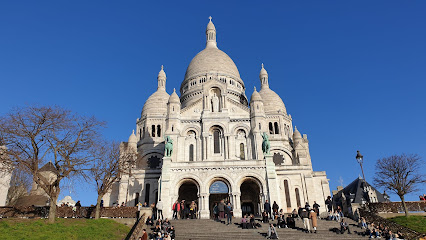
Place du Tertre
Experience the vibrant artistic heart of Paris at Place du Tertre, where creativity and culture come alive in a charming plaza setting.
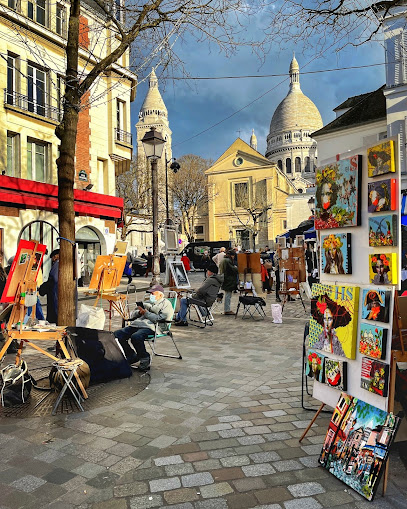
Wall of Love
Discover the Wall of Love in Montmartre, Paris: a mosaic of affection celebrating love in over 300 languages, perfect for romantic moments and memorable photos.

Square Louise Michel
Discover the serenity of Square Louise Michel, a beautiful garden at the foot of Sacré-Cœur, perfect for relaxation and stunning views in Paris.

Square Jehan Rictus
Explore the serene Square Jehan Rictus in Montmartre, a vibrant park filled with beauty, culture, and the artistic spirit of Paris.
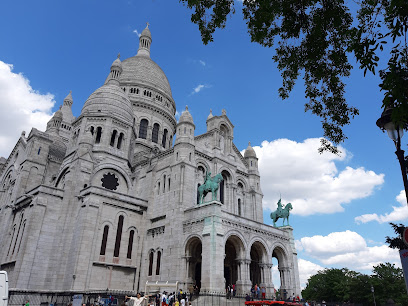
Musée de Montmartre
Discover the artistic legacy of Montmartre at Musée de Montmartre, where art, history, and serene gardens create an unforgettable experience.

Overlook of Paris
Discover breathtaking views of the Eiffel Tower and the Paris skyline at the Overlook, a scenic gem in the heart of the city.
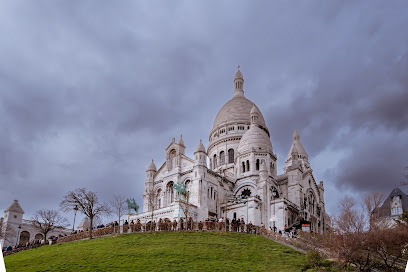
Arènes de Montmartre
Discover the serene beauty of Arènes de Montmartre, a historic amphitheater nestled in the heart of Paris's artistic Montmartre district.

Chateau d'Eau de Montmartre
Explore the Chateau d'Eau de Montmartre, a captivating historical landmark that offers breathtaking views and a glimpse into Paris's rich architectural heritage.

Place du Calvaire
Discover the tranquil beauty of Place du Calvaire in Montmartre, a perfect escape in the heart of Paris where art and serenity meet.

Unmissable attractions to see
Basilique du Sacré-Cœur de Montmartre
Experience the breathtaking Basilique du Sacré-Cœur, a stunning architectural masterpiece and spiritual haven with panoramic views of Paris.

Place du Tertre
Discover the artistic heart of Montmartre at Place du Tertre, where vibrant street art and charming cafes come together in a quintessential Parisian experience.

Wall of Love
Discover the Wall of Love in Montmartre, a unique artistic monument celebrating love in over 300 languages, perfect for romantic photos and memories.

Square Louise Michel
Experience the tranquility of Square Louise Michel, a lush park offering stunning views of Sacré-Cœur and a serene escape in the heart of Montmartre.
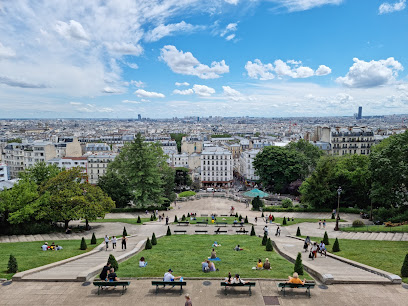
Square Jehan Rictus
Explore the serene beauty of Square Jehan Rictus in Montmartre, a peaceful park adorned with sculptures and lush greenery, perfect for relaxation.

Musée de Montmartre
Explore the artistic legacy of Montmartre at the Musée de Montmartre, a serene museum featuring captivating exhibits and a beautiful garden.

Dalí Paris
Discover the surreal genius of Salvador Dalí at Dalí Paris, a modern art museum in the heart of Montmartre, showcasing over 300 unique artworks.
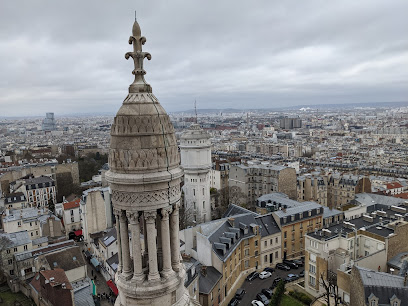
Overlook of Paris
Discover the stunning views of Paris from the Overlook of Paris, a scenic spot in Montmartre that captures the beauty of the City of Lights.

Montmartre
Explore Montmartre, the artistic heart of Paris, where stunning views, vibrant culture, and rich history await every visitor.
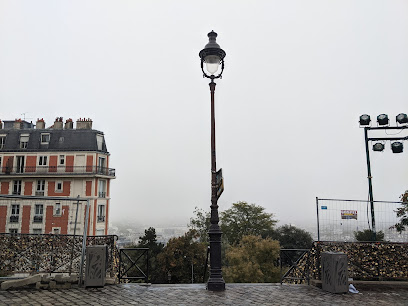
Place du Calvaire
Discover serenity at Place du Calvaire in Montmartre, a charming square with stunning views, delightful cafés, and vibrant street art.
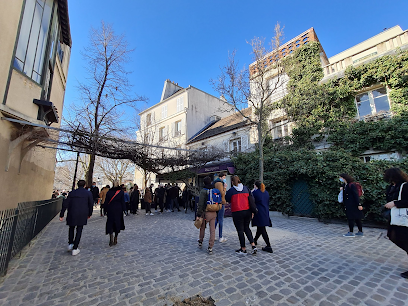
Essential places to dine
Le Poulbot
Experience authentic French cuisine at Le Poulbot in Montmartre—where culinary tradition meets charming ambiance.

La Taverne de Montmartre
Discover La Taverne de Montmartre: Your go-to destination for authentic French cuisine in the enchanting heart of Paris.

La Boîte aux Lettres
Experience authentic French cuisine at La Boîte aux Lettres, where every dish tells a story amidst the charm of Montmartre.

La Mère Catherine(Macaroon)
Experience authentic French cuisine at La Mère Catherine in Montmartre—home to exquisite macarons and timeless culinary traditions.

Un Zèbre à Montmartre
Discover Un Zèbre à Montmartre: A delightful fusion of French cuisine and vibrant bar culture in the heart of Paris.

Le Cabanon de la Butte
Savor the essence of French cuisine at Le Cabanon de la Butte, where every dish tells a story.

L'Annexe
Experience authentic French cuisine at L'Annexe in Montmartre - where culinary excellence meets Parisian charm.

Chantoiseau
Experience the exquisite flavors of France at Chantoiseau, where fine dining meets vegetarian delights in the heart of Montmartre.

Au Clair de la Lune
Experience the heart of French cuisine at Au Clair de la Lune in Montmartre - where tradition meets flavor in every dish.

Les Ambassades de Montmartre
Experience authentic French cuisine at Les Ambassades de Montmartre in Paris - where culinary artistry meets vibrant atmosphere.

Markets, malls and hidden boutiques
Chinemachine
Discover a hidden gem of vintage fashion in the heart of Paris at Chinemachine, where style meets history in every unique piece.

Paris Duck Store
Explore the Paris Duck Store in Montmartre for whimsical gifts and unique souvenirs that capture the charm of Paris.

La Boutique des Anges
Explore La Boutique des Anges, a captivating gift shop in Paris offering unique artisan creations and beautiful bridal accessories for every occasion.
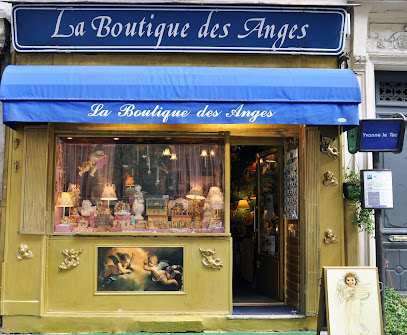
Montmartre Village
Discover Montmartre Village, a charming gift basket store in Paris offering unique local products and unforgettable souvenirs for every traveler.

Moulin Rouge Boutique
Explore the enchanting Moulin Rouge Boutique in Paris, where unique gifts and souvenirs celebrate the essence of the iconic cabaret experience.

Émile et Ida
Discover unique Parisian fashion at Émile et Ida, a charming clothing store in Montmartre, perfect for trendy souvenirs and stylish finds.

Montmartre I love you
Explore Montmartre I Love You, the charming gift basket store in Paris, offering exquisite gourmet treats and unique souvenirs.

Au Paris Montmartre
Discover authentic Parisian souvenirs at Au Paris Montmartre, where every item tells a story of the City of Light.

Le Monde en Couleurs
Explore the artistic soul of Paris at Le Monde en Couleurs, a charming gift shop filled with unique souvenirs and local artisan treasures.

A St. Pierre de Montmartre
Explore the charm of A St. Pierre de Montmartre, your go-to souvenir store in the heart of Parisian artistry and culture.

Essential bars & hidden hideouts
Marlusse et lapin
Discover the cozy charm of Marlusse et Lapin, a budget-friendly bar in Paris ideal for drinks, socializing, and enjoying the vibrant nightlife.

Le Très Particulier
Discover Le Très Particulier, a stylish cocktail bar nestled in Montmartre, where innovative drinks and a cozy ambiance create an unforgettable Parisian experience.

Chez Camille
Experience the vibrant spirit of Montmartre at Chez Camille, a charming bar offering delightful drinks and a taste of local culture.
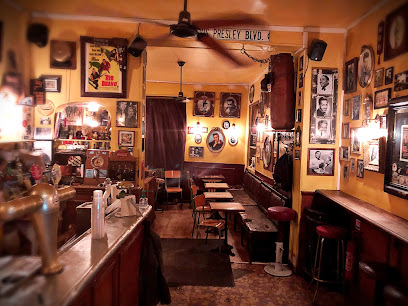
Le Tagada Bar
Discover Le Tagada Bar in Montmartre, where vibrant cocktails and delicious tapas meet the essence of Parisian nightlife.

Lux Bar
Discover Montmartre's Lux Bar, where Parisian charm meets a vibrant culinary experience in a cozy atmosphere.

Au Clair de Lune
Discover Au Clair de Lune, a charming bar and coffee shop in Montmartre, Paris, perfect for light bites, drinks, and soaking up the local ambiance.

The Crazy Heart
Experience the vibrant nightlife of Paris at The Crazy Heart, where expertly crafted cocktails and a lively atmosphere await you.
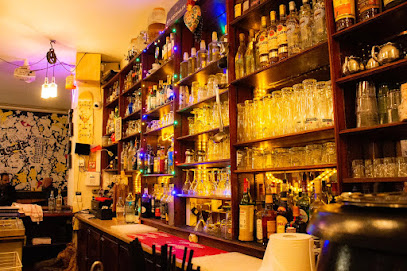
Pub Montmartre
Discover the charm of Montmartre at Pub Montmartre, where delectable cuisine meets live music in a cozy Parisian setting.

Lost Generation
Discover Lost Generation in Montmartre, where innovative cocktails meet a vibrant Parisian atmosphere, perfect for a night out.

Les Deux Chauves
Savor the essence of French cuisine at Les Deux Chauves, a unique tapas and wine bar in Paris that delights with every bite.

Local Phrases
-
- HelloBonjour
[bohn-zhoor] - GoodbyeAu revoir
[oh reh-vwar] - YesOui
[wee] - NoNon
[nohn] - Please/You're welcomeS'il vous plaît / De rien
[seel voo pleh / duh ryehn] - Thank youMerci
[mehr-see] - Excuse me/SorryExcusez-moi / Désolé
[ehk-skew-zay mwah / day-zoh-lay] - How are you?Comment ça va?
[koh-mohn sah vah] - Fine. And you?Bien. Et vous?
[byehn. ay voo] - Do you speak English?Parlez-vous anglais?
[par-lay voo ahn-glay] - I don't understandJe ne comprends pas
[zhuh nuh kohm-prahnd pah]
- HelloBonjour
-
- I'd like to see the menu, pleaseJe voudrais voir la carte, s'il vous plaît
[zhuh voo-dray vwahr lah kart, seel voo pleh] - I don't eat meatJe ne mange pas de viande
[zhuh nuh mahnj pah duh vyand] - Cheers!Santé!
[sahn-tay] - I would like to pay, pleaseJe voudrais payer, s'il vous plaît
[zhuh voo-dray pay-ay, seel voo pleh]
- I'd like to see the menu, pleaseJe voudrais voir la carte, s'il vous plaît
-
- Help!Au secours!
[oh suh-koor] - Go away!Allez-vous en!
[ah-lay voo zahn] - Call the Police!Appelez la police!
[ah-peh-lay lah po-lees] - Call a doctor!Appelez un médecin!
[ah-peh-lay uh may-dsahn] - I'm lostJe suis perdu
[zhuh swee pair-doo] - I'm illJe suis malade
[zhuh swee mah-lahd]
- Help!Au secours!
-
- I'd like to buy...Je voudrais acheter...
[zhuh voo-dray zah-shtay...] - I'm just lookingJe regarde juste
[zhuh ruh-gard zhewst] - How much is it?Combien ça coûte?
[kohm-byen sah koot] - That's too expensiveC'est trop cher
[say troh shair] - Can you lower the price?Pouvez-vous baisser le prix?
[poo-vez voo bay-say luh pree]
- I'd like to buy...Je voudrais acheter...
-
- What time is it?Quelle heure est-il?
[kell er ay-teel] - It's one o'clockIl est une heure
[eel ay-tuhn er] - Half past (10)Dix et demi
[dees ay duh-mee] - MorningMatin
[mah-tahn] - AfternoonAprès-midi
[ah-pray mee-dee] - EveningSoir
[swahr] - YesterdayHier
[yehr] - TodayAujourd'hui
[oh-zhoor dwee] - TomorrowDemain
[duh-man] - 1Un
[uhn] - 2Deux
[duh] - 3Trois
[twah] - 4Quatre
[kat] - 5Cinq
[sank] - 6Six
[sees] - 7Sept
[set] - 8Huit
[wheat] - 9Neuf
[nuff] - 10Dix
[dees]
- What time is it?Quelle heure est-il?
-
- Where's a/the...?Où est...?
[oo ay...] - What's the address?Quelle est l'adresse?
[kell ay lad-res] - Can you show me (on the map)?Pouvez-vous me montrer (sur la carte)?
[poo-vez voo muh mohn-tray (sur lah kart)] - When's the next (bus)?Quand est le prochain (bus)?
[kahn ay luh proh-shan (boos)] - A ticket (to ....)Un billet (pour ....)
[uhn bee-yay (poor)]
- Where's a/the...?Où est...?
History of Montmartre
-
Montmartre's history dates back to ancient times, with evidence of human habitation as early as the Gallic period. The hill was known as 'Mons Martis' during the Roman era, a name that later evolved into Montmartre. The site was significant for its strategic elevation and its position along trade routes, attracting early settlers and traders.
-
In the late 19th century, the Basilica of Sacré-Cœur was constructed atop Montmartre, symbolizing a spiritual and national reconciliation following the Franco-Prussian War. Completed in 1914, its stunning Byzantine architecture and prominent location have made it a focal point for both worship and tourism, deeply influencing the cultural landscape of Paris.
-
The 19th century saw Montmartre emerge as an epicenter for artists, writers, and musicians. This period gave birth to the Montmartre School, which included renowned figures such as Pablo Picasso, Vincent van Gogh, and Henri Toulouse-Lautrec. The neighborhood's bohemian lifestyle and vibrant cabarets, like the Moulin Rouge, became legendary, attracting creative minds from around the world.
-
During the Paris Commune of 1871, Montmartre was a crucial battleground for revolutionary activities. Its residents played a significant role in the uprising against the French government, and many key events unfolded in the area. The aftermath of the Commune led to a profound impact on the local community and its identity, shaping the narrative of resistance and social change.
-
The 20th century brought a new wave of cultural significance to Montmartre, continuing its legacy as a hub for artists, musicians, and intellectuals. The neighborhood became synonymous with the avant-garde movement, housing numerous galleries, theaters, and cafés where ideas flourished. The continued influence of Montmartre is evident in contemporary Parisian culture, maintaining its status as a symbol of artistic freedom.
Montmartre Essentials
-
Montmartre is accessible from various neighborhoods in Paris. The closest metro station is Abbesses (Line 12), which brings you right into the heart of Montmartre. Alternatively, you can take Line 2 to Anvers station, which is near the base of the hill. From Gare du Nord, take Metro Line 4 to Strasbourg-Saint-Denis, then transfer to Line 8 towards Balard and get off at the station Grands Boulevards. Buses 30, 31, 54, and 68 also service the area. For those arriving from the airports, a taxi or RER B train to Gare du Nord followed by the metro is recommended.
-
Montmartre is best explored on foot due to its steep streets and charming alleys. The Montmartre Funicular is also a good option for those who wish to avoid the uphill walk. Public transport includes the metro and buses, with several lines running through the area. Bike rentals through the city's Vélib' system are available, offering a pleasant way to navigate the neighborhood. Be prepared for hilly terrain if you decide to walk.
-
Montmartre is generally safe for tourists, but like any urban area, it's important to stay vigilant. Petty crimes such as pickpocketing can occur, especially around crowded tourist spots like Sacré-Cœur and Place du Tertre. Areas near the Pigalle metro station, especially at night, can be riskier due to nightlife activity. Always be cautious of your belongings and avoid poorly lit streets after dark.
-
In case of an emergency, dial 112 for immediate assistance in France. The nearest police station is located at 17 Rue des Abbesses. For medical emergencies, the nearest hospital is Hôpital Bichat, which can be reached by taxi or public transport. It is advisable to have travel insurance that covers medical emergencies. Pharmacies are available throughout the neighborhood for minor health issues.
-
Fashion: Do wear comfortable shoes for walking, and dress in layers as the weather can change. Don’t wear overly casual or beach attire in restaurants or shops. Religion: Do respect the customs at religious sites; take off your hat and speak quietly. Don’t take photos inside the Sacré-Cœur unless permitted. Public Transport: Do validate your ticket before boarding. Don’t block the doors when entering or exiting. Greetings: Do greet shopkeepers and locals with a friendly 'Bonjour'. Don’t forget to say 'Merci' after being served. Eating & Drinking: Do try local delicacies like crêpes and pastries. Don’t rush your meal; dining is a leisurely experience in France.
-
To experience Montmartre like a local, visit the lesser-known cafés and bistros away from the tourist trail, such as Le Consulat or La Maison Rose. Take time to explore the quiet streets and find the hidden vineyards and art studios. Attend a local event or art exhibition at the Espace Dalí or the Musée de l'Orangerie. For the best views of the city, visit the terrace at the Sacré-Cœur early in the morning or during sunset to avoid crowds.
Nearby Cities to Montmartre
-
Things To Do in Versailles
-
Things To Do in Rouen
-
Things To Do in Amiens
-
Things To Do in Reims
-
Things To Do in Caen
-
Things To Do in Lille
-
Things To Do in Tournai
-
Things To Do in Tours
-
Things To Do in Mons
-
Things To Do in Ypres
-
Things To Do in Kortrijk
-
Things To Do in Dinant
-
Things To Do in Namur
-
Things To Do in Nieuwpoort
-
Things To Do in Louvain-la-Neuve













